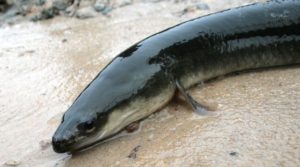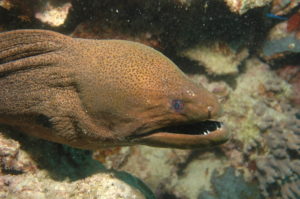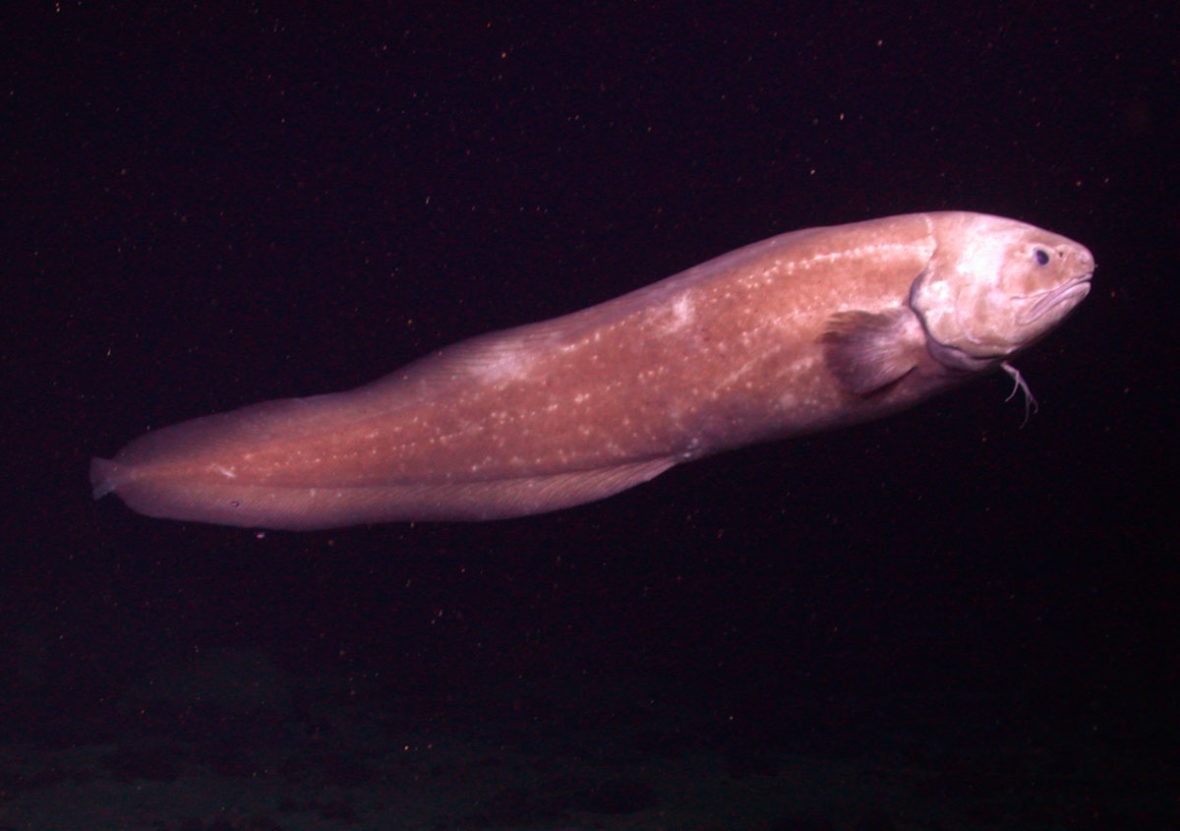Eels mostly inhabit shallow and muddy waters in the Amazon and Orinoco rivers in South America. One common misconception is that electric eels are true eels, but, other than the name, electric eels are more closely related to catfish and carp than true eels. Take a look below for 24 more fun and bizarre facts about eels.
1. While they live in shallow and muddy waters, they come to the surface every 10 minutes so they can breathe oxygen.
2. There are more than 700 different species of eels.
3. Depending on their species, eels can grow to be anywhere from 4 inches to 11 feet long. Even though they look like snakes, their bodies don’t have scales and are smooth to the touch.
4. They have fins on their back and on the tips of their tails. Most species have pointed heads with sharp teeth.
5. When eels are mating, they migrate to saltwater, such as oceans and seas. However, some species live in saltwater all the time.
6. They’re carnivorous, which means that they primarily eat meat. Their diet usually consists of worms, snails, frogs, shrimp, mussels, lizards and other small fish. They will generally hunt for food at night.
7. The most common eels are conger and moray eels. Conger eels only live in oceans and seas. Moray eels live in shallow waters and can usually be found in crevices in rocks or coral reefs.

8. There are 100 different types of conger eels. They can grow up to 6 feet in length and weigh more than 100 pounds. Due to how large they can get, they live in deep waters. They’re black or gray in color.
9. Moray eels grow to be about 5 feet in length, with the exception of one species which grows up to 11 feet. Even though they can grow to massive sizes, they prefer to inhabit shallow waters. Humans often hunt and eat moray eels.
10. Eels like to burrow in the sand because it allows them to surprise and attack their prey. However, some eels actually prefer to chase their prey.
11. Some species of eels travel up to 4,000 miles just to breed. This journey can take over 7 months to finish and while on the journey, the eel doesn’t eat.
12. After the eel breeds, it dies. The eel offspring will then take 3 years to become fully mature.
13. When eels are first born, they’re flat, transparent larvae. The larvae drifts to the surface of the sea to start feeding on dissolved nutrients.
14. The eel larvae change into glass eels and then into elvers, they’ll finally be close to becoming adults.
15. While eels are a delicacy in many cultures, they must be thoroughly cooked because their blood is very toxic.
16. Eels are covered in slimy mucus that allows them to slither around reefs without getting scratched.
17. They have very poor eyesight and will often bite a divers fingers who give them food.

18. Eels move through the water with an undulating motion.
19. Moray eels have long sharp canine teeth, while some have low nodular teeth. They’re also known to tie their bodies in knots in order to anchor themselves when tearing at food.
20. Courting eels will open their mouths wide and wrap their bodies around each other for hours. They only separate when the female lays her eggs. The male then fertilizes the eggs.
21. Eels are able to move themselves over wet grass and dig through wet sand to reach upstream.
22. They develop pigmentation when they’re in freshwater.
23. Eels are able to swim backward and forwards.
24. Eels have more than 100 vertebrae in their spines. This is why they’re so flexible and why they’re able to squeeze through the tiniest cracks.




